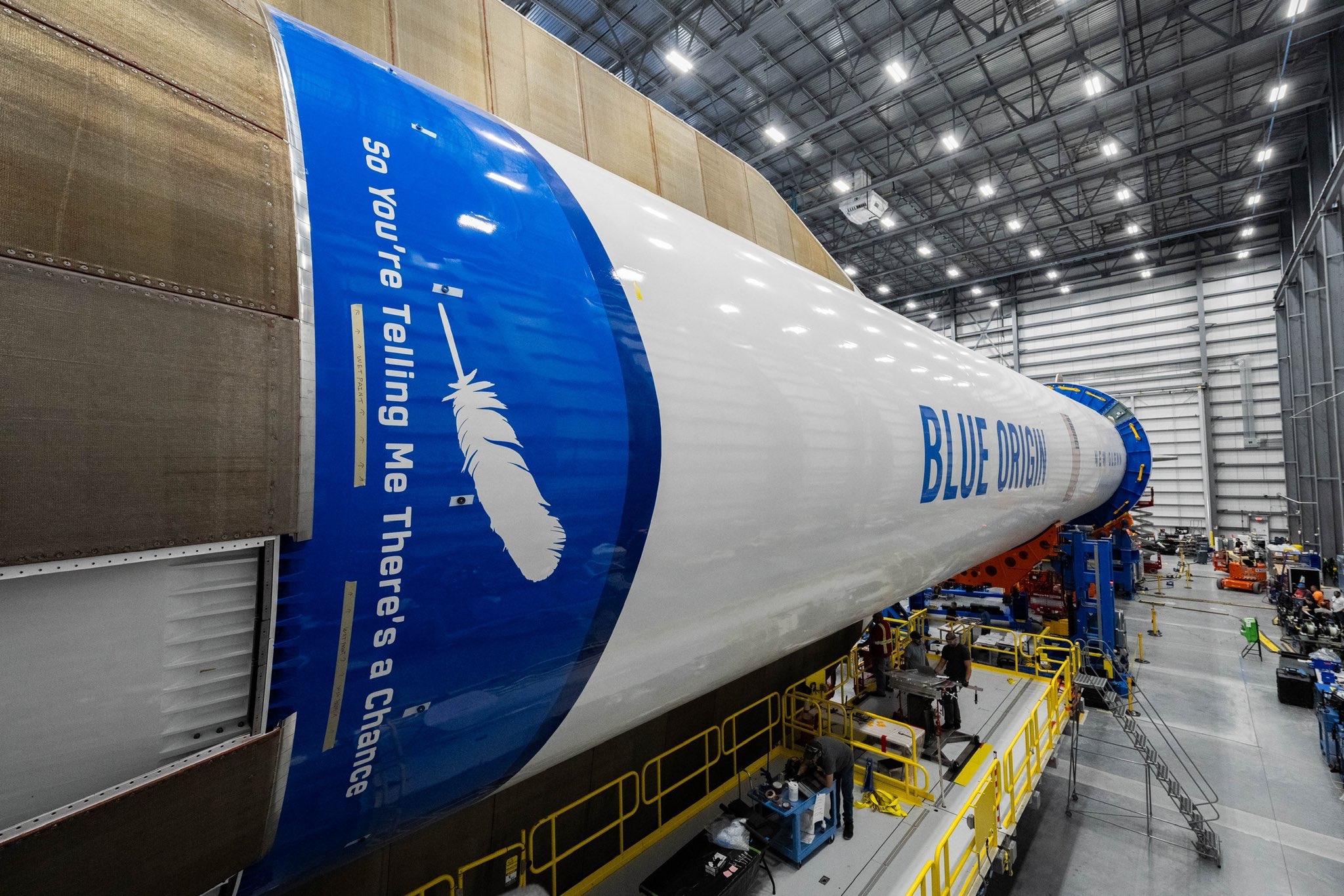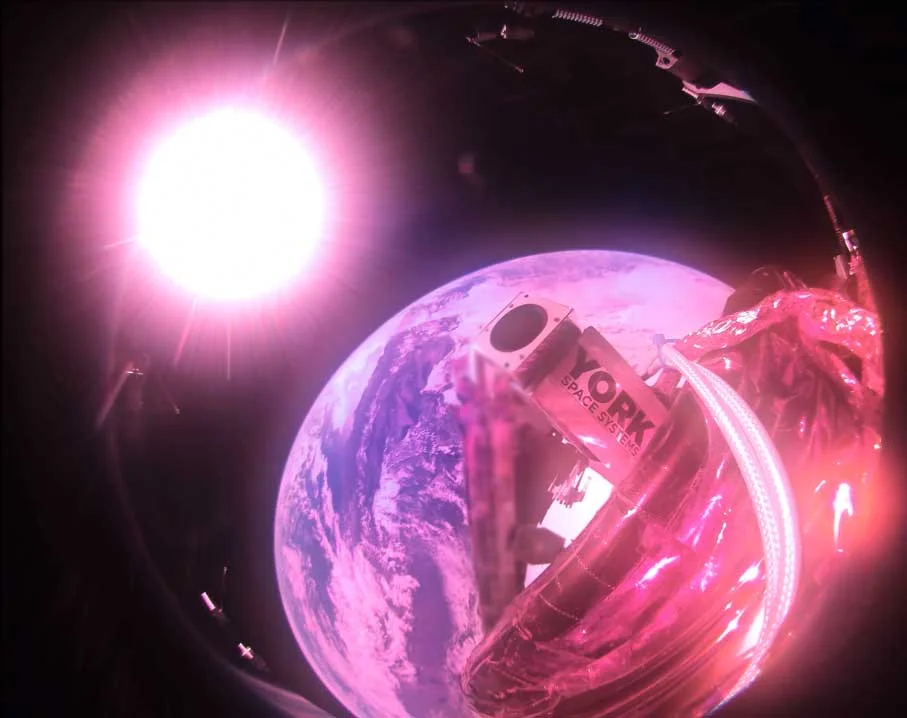Launch companies focus on scaling up flight rates of new vehicles
Original Publication Date: 2024-09-17 09:43

Executives with several launch companies say they are turning their attention to increasing their launch cadence. Among the most aggressive is Blue Origin, whose New Glenn rocket is scheduled to make its inaugural launch as soon as November. Fueling that jump in launch rate will be a fleet of reusable boosters. Other companies are planning to increase launch rates.
Leanspace secures €10.5 Million to Champion Next-Gen Satellite Constellation Operations
Original Publication Date: 2024-09-17 06:00

Leanspace has won the France 2030 “UMBRELLA” Project, valued at €10.5 million. The project aims to address the growing complexity of small satellites. Data volumes are skyrocketing and traffic must be secured with a higher level of trust.
Ex-Im Bank’s space project pipeline doubles to $9.5 billion in one year
Original Publication Date: 2024-09-17 02:18

U.S. Export-Import Bank underwriting $800 million worth of space transactions, official says. Requests for financial support are coming in from a mix of satellite projects. Ex-Im’s board approved a domestic finance initiative last year. French export credit agency BPI has greatly reduced its exposure to space.
U.S. military satellites built by York Space demonstrate optical communications in orbit
Original Publication Date: 2024-09-16 20:20

York Space Systems has successfully exchanged data in orbit using Tesat-Spacecom. The satellites are part of the Space Development Agency’s experimental network. York is the second satellite provider for SDA to demonstrate in-space communications. The next step will be integrating communications between York and SpaceX’s satellites.
Planet signs three-year DLR contract
Original Publication Date: 2024-09-16 15:43

Planet Labs Germany GmbH announced a contract Sept. 16 to provide Earth-observation data. The value of the three-year contract was not disclosed. DLR and German researchers will have access to PlanetScope products. The DLR has worked with Planet data for more than a decade.
Connecting the dots | FCC’s space sustainability authority in question as need grows
Original Publication Date: 2024-09-16 15:00

Petition launched to pause low-Earth orbit (LEO) satellite internet launches until the FCC reviews their environmental impact. Petition comes two years after a U.S. Appeals court shot down Viasat’s attempt to force an environmental review on the expansion plans of broadband rival SpaceX. FCC has made important strides to enforce more stringent orbital debris regulations.
Want to challenge Starlink in the satcom market?
Original Publication Date: 2024-09-16 14:59

SpaceX’s Starlink constellation is dominating the global market for high-throughput satellite communications. There is room for competitors to claim a significant market share, Novaspace says. To succeed, challengers will need access to launch vehicles, software-defined satellites and virtual ground segments.
SpaceX’s Galileo L13 set for Tuesday launch weather permitting at the Cape – SatNews
Original Publication Date: 2024-09-16 00:00

SpaceX to launch ESA’s Galileo L13, two more satellites for Europe’s alternative to American GPS SpaceX is scheduled to launch Galileo L13 (FOC FM26 & FM32) to Medium Earth Orbit, on Sunday, September 15th, at 3:57 PM – 4:39 PM PDT from Space Launch Complex 40, Cape Canaveral, Florida. Forecasts report potential thunderstorms in the afternoon. Galileo provides Europe with an alternative to the American GPS and Russian GLONASS constellations.
Al Jazeera, Saba World sign Eutelsat deals – SatNews
Original Publication Date: 2024-09-17 00:00

Al Jazeera Media Network has reaffirmed its commitment to Eutelsat for broadcast services across the Middle East, North Africa and Europe. Eutelsat has been chosen by Saba World for the delivery of free-to-air educational content to students across the MENA region.
SpaceX’s Group 9-17 batch of Starlink smallsats including 13 Direct to Cell is set to launch on Wednesday – SatNews
Original Publication Date: 2024-09-16 00:00

21 Starlink v2-mini satellites including 13 Direct to Cell will launch to low Earth orbit on Wednesday, September 18th. The launch costs $52,000,000. The forecast calls for a temperature of 58°F, scattered clouds, 49% cloud cover and a wind speed of 12mph.
The European Astro Pi Challenge 2024-25 is now open! – SatNews
Original Publication Date: 2024-09-16 00:00

The European Astro Pi Challenge is back for another year and registration is now open for Mission Zero and Mission Space Lab. In Mission Zero, young people design pixel art inspired by nature to display on the Astro Pi computers on board the International Space Station. In Mission Space Lab, teams of two to six young people are given a real-world scientific problem to investigate in space. The challenge this year is to calculate the speed at which the ISS is traveling at a given moment, as accurately as possible.
Telesat’s $2.54 Billion funding agreements with Canadian governments for Telesat Lightspeed satellite constellation – SatNews
Original Publication Date: 2024-09-16 00:00

Telesat announces the completion of funding agreements with the Government of Canada and the Government of Quebec for its Telesat Lightspeed broadband satellite constellation. Telesat now has all financing sources in place to fund the global Telesat Lights Speed network. Telesat has increased its Canadian workforce by approximately 33% in the last 12 months and expects 2024 capital expenditures for the program to be in the range of $1 billion to $1.4 billion.
NASA and ESA missions unexpectedly collaborate to reveal what accelerates solar winds
Original Publication Date: 2024-09-15 19:15

NASA's Parker Solar Probe and the European Space Agency's Solar Orbiter lined up to observe the same solar wind stream. The solar wind is a stream of charged particles, or plasma, expelled from the Sun’s atmosphere. As the solar wind moves away from the Sun, it cools slower than expected and accelerates. Where the energy that powers this phenomenon comes from has long been unknown.
